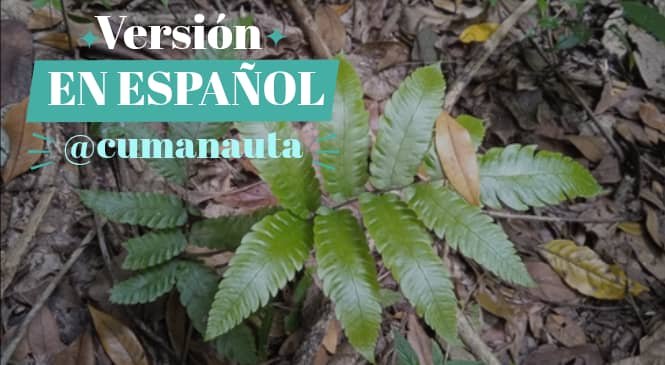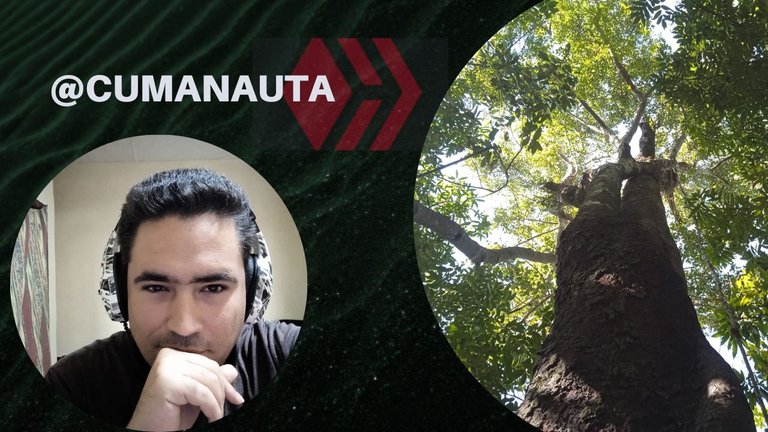Hello to all coffee lovers! This is one of the communities whose theme I enjoy the most, yet the truth is that I haven't made many posts here. That's why I don't want to miss the chance to share a different kind of post, one which is both closely related to and somewhat distant from the central theme of #cinnccf. Of course, I'm talking about the dirt side of coffee, all those things that come before it can hit any coffee shop.
A few days ago I went to work harvesting coffee, something I hadn't done in 20 years or so. Our transportation was an open-back truck, which is not a big deal on the flatlands. But as we climbed into the Escambray mountain range the temperature shift made itself felt without mercy.


We literally saw the dawn break on the road.
After more than an hour of travel, we had to continue the last leg of the journey to the camp on foot , because the fields are close to the road only on tv. Leaving the asphalt means entering the world of mud and constant humidity, as it rains here every day and the clay soil never has a chance to dry out.


The place hasn't changed a bit in over twenty years.
Coming to harvest coffee in Cazañas, near Crucesitas, in the Escambray mountains, has a particular meaning for me. This is precisely where I learned to harvest coffee, back when I was 13 years old. Returning at 36 to the same place left me with a bittersweet taste: little next to nothing has changed. On one hand the landscape remains intact and as beautiful as ever, but on the other hand the life here continues its course without having improved at all over time.
When we arrived, the coffee with a lot of sugar that passes for breakfast wasn't ready yet, so we immediately set off for the field. Later, they brought us a five-liter jug of weak coffee which we drank in amounts concerning for our health. My only complaint is that I had to drink it with sugar, as for years I have preferred it bitter.



We went to the fields right away and got to work.
Coffee harvesting is an arduous work because at least in Cuba, plantations are in the mountains, almost always on steep slopes. Fields are under the shade of large trees, so the plants are always wet, and dew doesn't evaporate until near midday. To spice it up, the coffee plant is home to several species of ants and bugs that will mercilessly bite all your exposed skin.
Another issue is that we are not yet at the peak of the harvest, when all the coffee ripens almost at once. At this stage, the ripening is uneven even among the fruits of the same plant, so the work is slow and meticulous, to pick out the ripe beans without disturbing the green ones. Personally, I enjoyed it, perhaps due to nostalgia for "the old good times", in spite of ant bites and other less familiar bugs.



Even I could see the poor condition of the fields.
From an agrotechnical point of view, the coffee plants were undernourished and overgrown with weeds, with low production that betrays negligence. They are also too shaded; they need careful pruning of the canopy of the shade trees. Perhaps because I had been through these same fields in another time, I retained a memory of better yields and abundant harvests, well-maintained and profitable plantations.
Everything betrays the bad moment the coffee industry is going through in the country. This saddens me greatly because even if I no longer have a direct relationship with the trade, I come from a family of coffee growers. My father nearly cried when I showed him the photos of the coffee plantations, barely distinguishable from the wild undergrowth. It' didn't surprise me, he grew up running through these same fields and remembers clearly how different things were in other times.


In this last photo here, you can see a coffee cherry half-eaten, with the two beans exposed. That's the work of bats; at least the wildlife is still healthy in these parts.
It was a long, exhausting day for all, work lasted until the rain caught us in the field in the afternoon. Luckily I thought it could happen and had something at hand to protect my phone. The truck ride back was equally long, but this time under a heavy downpour.
The world of coffee is beautiful but complex; it is difficult and exhausting work in each of its stages. Suffice it to say that after finishing the harvest, we carried the full sacks on muleback to the camp. There we emptied the full sacks onto mats, to pick out any green beans that might have slipped in and to achieve a quality product from the first phase.


From the field to the cup (or glass, lol), this is a long and complex story.
From the field to the coffee shops, this is a path blooming with hard work and sweat, which is why I believe the best way to honor coffee growers is to consciously enjoy the fruit of their labor. All coffee lovers should keep in mind that to taste the drink, many people in different parts of the world contributed their grain of sand. It is a demanding crop, which requires enormous dedication and detailed knowledge.
That's why, when you raise a cup of coffee, remember that its aroma is the fruit of the hard work of many, many people. Take a moment and savor it; in that flavor travels so much effort that it truly deserves our appreciation and that instant of sensory pleasure.

¡Hola a todos los amantes del café! A pesar de ser esta una de las comunidades que por su tema más me agradan, lo cierto es que son pocas mis publicaciones en ella. Por eso no quiero perder la oportunidad de traer por acá un post especial, que a la vez está íntimamente relacionado y un poco distante del tema central de #cinnccf. Me refiero a la parte agrícola del café, una historia que ocurre mucho antes de llegar a la taza.
Hace unos días fui a las montañas a trabajar en la recogida de café, algo que no había hecho en aproximadamente 20 años. El transporte fue un camión descubierto, lo que en el llano carece de importancia, pero a medida que ascendíamos el cambio de temperatura se hizo sentir sin miramientos.


Literalmente amanecimos en la carretera.
Después de más de una hora de viaje tocó continuar el último tramo del camino a pie hasta el campamento, pues como es de esperar los campos no están cerca de la carretera. Bajar del asfalto significa entrar al mundo del fango y la humedad constante, pues aquí llueve todos los días y el suelo arcilloso no tiene jamás la oportunidad de secarse.


El lugar no ha cambiado nada en más de veinte años.
Venir a recoger café a Cazañas, cerca de Crucesitas, en las montañas del Escambray, tiene para mí un significado particular. Aquí fue precisamente que recogí café por primera vez cuando tenía sólo 13 años. Regresar a los 36 al mismo lugar me dejó un sabor agridulce, pues poco ha cambiado. Eso quiere decir que por una parte la belleza natural sigue intacta, mientras que por la otra parte la vida de los locales sigue su curso sin haber mejorado en nada con el paso del tiempo.
Cuando llegamos el café con bastante azúcar que pasa por desayuno no estaba listo aún, así que partimos de inmediato para el campo. Luego nos llevaron un jarro de cinco litros de café claro y que bebimos en cantidades preocupantes para la salud. Mi única queja es que me lo tuve que tomar con azúcar, pues hace años lo prefiero amargo.



Partimos al campo y pusimos manos a la obra de inmediato.
La recogida de café es un trabajo difícil, porque al menos en Cuba los cafetales están en las montañas, casi siempre en pendientes pronunciadas. Los campos están la sombra de los árboles grandes, por lo que las plantas están siempre húmedas y el rocío no se evapora hasta cercano el mediodía. Además, el cafeto es hogar de varias especies de hormigas que irritan la piel expuesta con sus picaduras.
Otro problema es que no estamos todavía en el punto álgido de la cosecha, cuando todo el café madura casi de golpe. En esta etapa la maduración es dispareja incluso entre los frutos de una misma planta, por lo que el trabajo es lento y minucioso, para entresacar los granos maduros sin perturbar los verdes. En lo personal disfruté el trabajo, quizás por la nostalgia de otros tiempos, a pesar de las picaduras de hormigas y otros bichos menos conocidos.



A pesar de la nostalgia no pude evitar ver la mala condición en que están los campos.
Desde el punto de vista agrotécnico, los cafetos estaban desnutridos y sin chapear, con una baja producción que delata la negligencia. También están demasiado sombreados, necesitan una poda cuidadosa de la copa de los árboles de sombra. Quizás por haber recorrido estos mismos campos en otro tiempo, yo conservaba un recuerdo de mejores rendimientos y cosechas abundantes, plantaciones bien cuidadas y rentables.
Todo delata el mal momento que atraviesa la industria cafetalera en el país. Eso me entristece mucho, pues aunque ya no tengo relación directa con el campo, vengo de una familia de caficultores. Mi padre casi lloró cuando le enseñé las fotografías de los cafetales apenas indiferenciables del monte. No es para menos, él creció corriendo por estos mismos lugares y recuerda con claridad qué tan diferentes eran las cosas en otros tiempos.


En esta última fotografía de aquí se ve una cereza de café a medio roer, con los dos granos expuestos. Eso es obra de los murciélagos, por lo menos la vida silvestre sigue sana en estos parajes.
En definitiva fue un día agotador, la jornada de trabajo se extendió hasta que la lluvia nos sorprendió el campo por la tarde. Por suerte tomé precauciones y tenía a mano con qué proteger el teléfono móvil. De regreso nos tocó otra hora de viaje en camión, pero esta vez bajo un aguacero cerrado.
El mundo del café es hermoso pero complejo, es un trabajo difícil y extenuante en cada una de sus etapas. Baste decir que después de terminada la recogida sacamos los sacos llenos a lomos de mulo hasta el campamento. Allí vaciamos los sacos llenos en esteras, para entresacar los granos verdes que pudieran haberse colado y lograr un producto de calidad desde la primera fase.


Del campo a la taza (o vaso) de café hay una historia larga y compleja.
Desde el campo hasta las cafeterías hay un camino lleno de trabajo y sudor, por eso creo que la mejor manera de honrar a los caficultores es disfrutar a conciencia el fruto de su trabajo. Todos los amantes del café debemos tener en mente que para degustar la bebida muchas personas en diferentes lugares del mundo aportaron su granito de arena. Es un cultivo exigente, que requiere una dedicación enorme y un conocimiento detallado.
Por eso, cuando levantes una taza de café, recuerda que su aroma es el fruto del trabajo duro de muchísimas personas. Tómate un momento y degústalo, en ese sabor viaja tanto esfuerzo que bien merece nuestra apreciación y ese instante de placer sensorial.

Texto original en español libre de IA, traducido al inglés con ayuda de Google Translate y luego revisado por mi.
Separador de idiomas cortesía de @restaurador, banner cortesía de @yuraimatc.
El resto de las imágenes empleadas son de mi propiedad.
The original Spanish version of this post is free of AI, translated into English with Google Translate's help and reviewed by me.
Language divider courtesy of @restaurador, banner courtesy of @yuraimatc.
All other images used are of my property.
I understand the nostalgia and special sentiments you have. I'd love to visit a coffee farm one day:)

Coffee farms are beautiful places at least in Cuba, always on the mountains and surrounded by beautiful natural landscapes. It is a tough work though, and the ants are quite obnoxious, but I love it anyway. Thanks a lot for your words and for stopping by my post.
Thanks a lot for your kind support, it is always a pleasure to capture your attention.
Has sido votado por
PROYECTO ENLACE
'Conectando Ideas y Comunidades'
PROYECTO ENLACE es un proyecto de curación de habla hispana enfocado en recompensar contenido de calidad y apoyar autores en su proceso de crecimiento en HIVE.
Creemos y apostamos por el futuro de esta gran plataforma, y estamos muy emocionados de poder hacerla crecer junto a esta comunidad. Así que te invitamos a publicar en nuestra COMUNIDAD y estar atento a todas las actividades que tenemos preparadas y que estaremos publicando en breve.
¿QUIERES AUTOMATIZAR TUS GANANCIAS DE CURACIÓN? SE PARTE DEL PROYECTO ENLACE APOYANDO A NUESTRO TRAIL EN HIVE.VOTE INGRESA AQUÍ PARA CONOCER LOS DETALLES.
¿QUIERES INVERTIR ENLACE? DESCUBRE COMO HACERLO Y GENERAR INGRESOS DE FORMA SEMANAL MEDIANTE TU DELEGACIÓN DE HP AQUÍ TE EXPLICAMOS COMO.
Te invitamos a participar en nuestro servidor de Discord: https://discord.gg/3S9y7BbWfS
Atentamente
EQUIPO ENLACE 2025
Muchas gracias por el apoyo, es un reconocimiento muy gratificante.
Ya creo que es laborioso. Luego despulpar, secado, tostado y todo lo demás. 🤍💜 volveré a ver la foto porque no me fue posible verlas todas
Es un proceso insospechadamente largo y laborioso. Por ejemplo, poca gente fuera de la industria sabe que después de despulpado, secado y ensacado, hay que dejar reposar el café en sacos un año en almacén a temperatura fresca, porque solo así alcanza las mejores notas de ese sabor que todos perseguimos. Gracias por tus palabras y por llegarte a mi post.
Gracias a ti
I enjoyed reading about your experience harvesting coffee, @cumanauta, as well as a bit of your family history.
I am glad you enjoyed it, this one is a post I wanted to write since I first discovered the community, but I lacked any photos to go with it. The opportunity presented itself the other day to go there and work on the fields, and I jumped aboard even if I hadn't touched the coffee cherries in a long time. It is a good thing indeed to see people enjoying the post. Thanks a lot for your words and for stopping by my blog.
Muchas veces recogí café durante mis años becada. Es una tarea seria y difícil. Y como tienen hormigas las matas. Menos mal que no es tu oficio diario. Jjjj
Las hormigas y santanicas son molestas en extremo, pero subir y bajar lomas con jabuco y además el saco a cuestas se las trae también. Digo lo mismo que tú, por suerte no es mi trabajo diario, yo sé que tarde o temprano iba a explotar por toda la burocracia e incompetencia que rodea ese mundo. Muchas gracias por tus palabras y por llegarte a mi post.
Un olacer
Tienes muy buen poder de observación, tu post marca una ruta, un destino.
Excelente este. de la recolección de café en las lomas del Escambray.